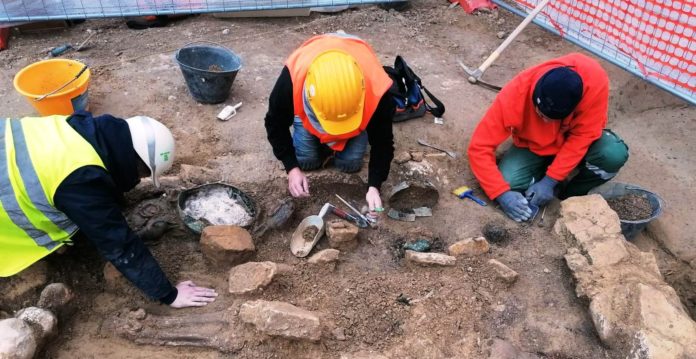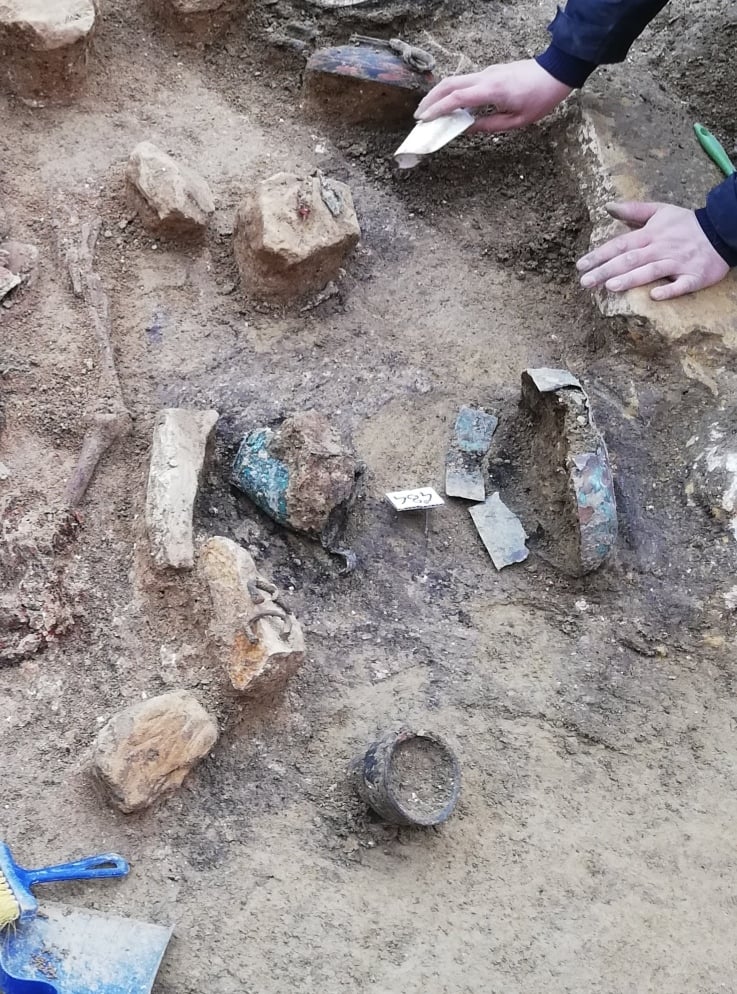Information
Hellenistic-Era Grave Discovered in Chieti, Italy
A spectacular Hellenistic-era grave featuring elegant grave goods was just uncovered in Chieti, Italy last week as a result of a public works project.
The discovery of the burial, from the fourth to the third century BC, was made as a result of renovations of the Piazza San Giustino in the city, which is located in the Abruzzo region, with archeological research coordinated by the Superintendentza.
Incredibly, the Hellenistic-era burial site was only a few centimeters under the ground, somehow miraculously escaping the numerous deep holes excavated for the creation of cisterns during the Roman period as well as in the 800s.
Hellenistic-era grave in a region once populated by Illyrian Greeks
Abruzzo is located in central Italy along the coast of the Adriatic Sea. The area was inhabited even before the Paleolithic era. Large settlements have been unearthed near the city of Chieti in the Foro River Valley. In prehistoric times Abruzzo was inhabited by Italic tribes as well as Illyrian Greek peoples, who established many colonies on the Adriatic coast.
The Hellenistic-era grave is unusual for its almost quadrangular shape defined by a perimeter of stone slabs. The funerary structure is not only twice the size of a normal grave; archaeologists say that it appears unique in its contents as well.
Hellenistic Grave includes grave goods such as vases, amulets
Inside it they found the remains of a diminutive woman who was accompanied in her journey to the afterlife by a very rich array of bronze, glass paste and ceramic vases, some of them imported; her clothing was decorated with bronze elements, along with amulets.
The excavations of the grave are now finished, leaving the researchers to study the objects they found and conduct further anthropological analyses of the body along with what they found in the vases and vessels found alongside her.
In addition, they will be investigating the context of the tomb as well as all the layers that accumulated atop and around it over the centuries.
The archaeologists hope that their study of the grave will allow them to further define a distant phase in Italian history, with recent finds already suggesting a wealthy society with an economy based on extensive contacts with other areas, along with the use of imported goods.
Greeks established colonies beginning in 8th century BC
The first ancient Greek colonies were established outside Greece as early as the 8th century BC, while wide colonization continued through the fifth century BC.
A number of cities and settlements were established, spreading Hellenism in Europe, Africa and Asia during those centuries, reaching a total of 500 — which involved up to 60,000 Greek citizen colonists.
The founding of the colonies (αποικίαι, singular αποικία) was an organized endeavor of the larger city-states, although in many cases it came about through a collaboration of cities.
The places to be colonized were carefully selected in advance, based on not only their potential business advantages but also for offering security from raiders.
The first Greek colony created outside of present-day Greece was located in the Pithekousai islands (today’s Ischia, Italy).
The colony was created by Chalcidians and Eretrians between 770 and 760 BC. A few years later, the inhabitants of Chalkis and Kymi founded Kymi, opposite the Pithekousai Islands, in today’s Campania on mainland Italy.
By the year 734 BC, Greeks began the systematic colonization of Sicily: Naxos in Sicily, Syracuse, Catania, Leontines, Megara Hyblaea, and Mylai in Sicily were all founded before the year 700 BC.
At the same time, Greek colonies began to be established in southern Italy, with Taranto, Sybaris and Kroton (Crotone) and Rhegium.
Category: English
News
Information
Key words:


